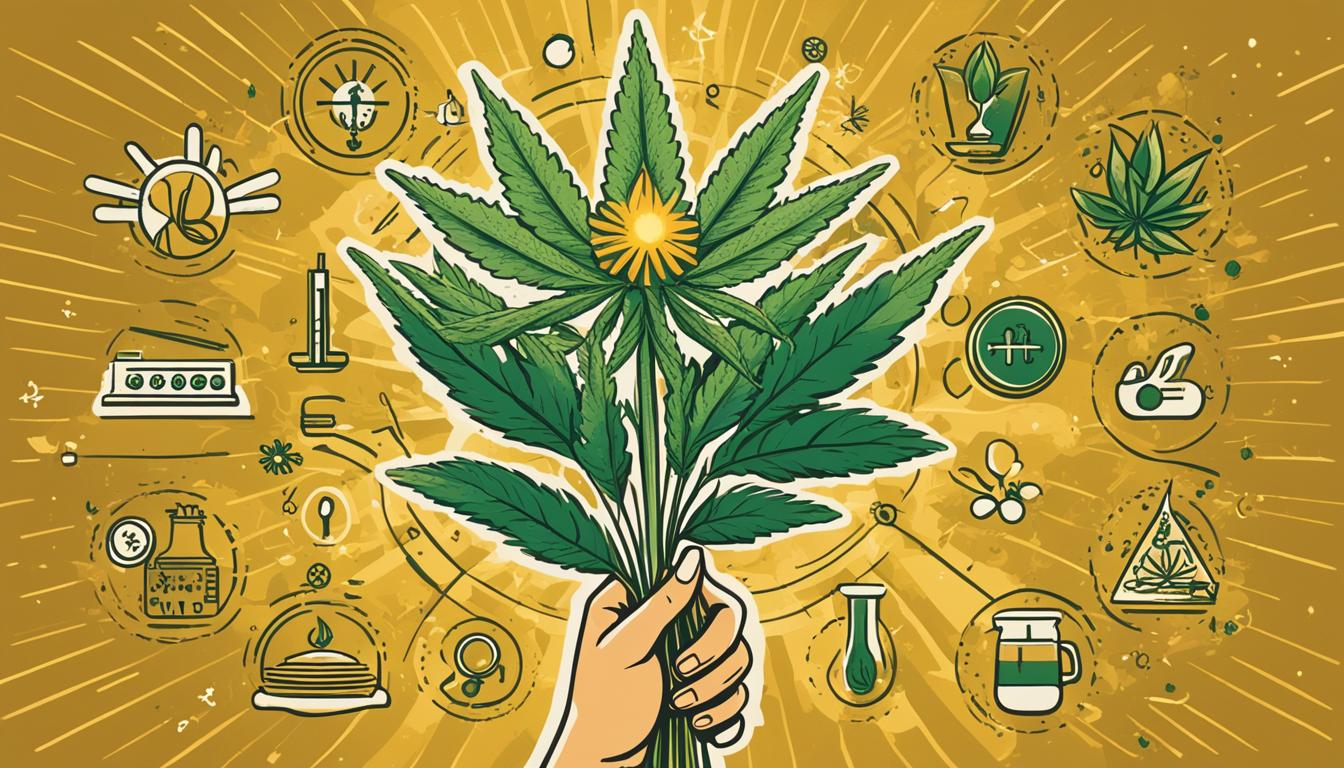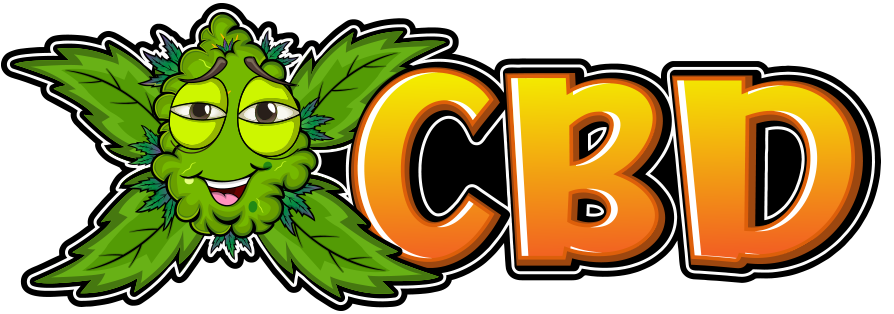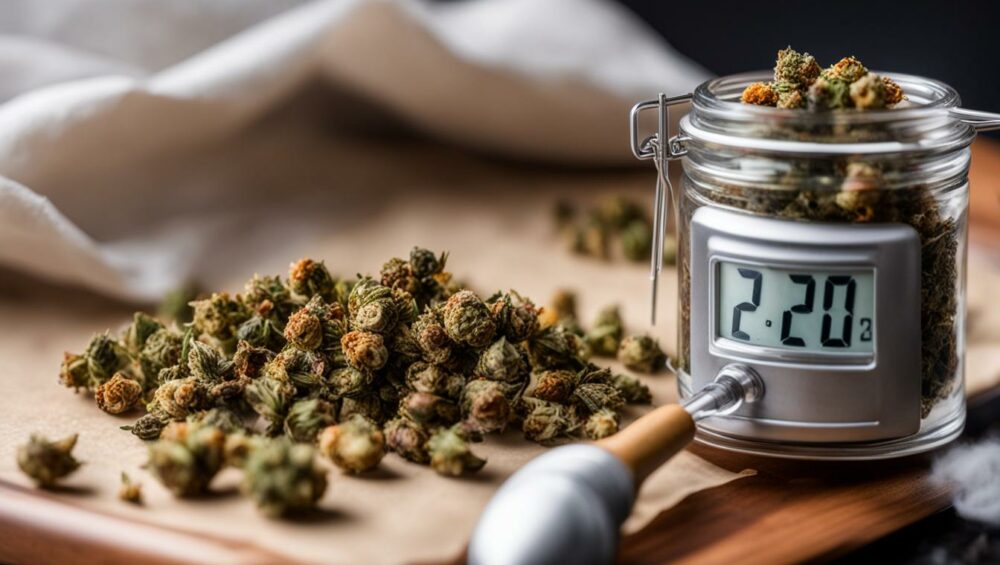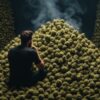Discover the key to unlocking the full potential of CBD flower with the process of decarboxylation. By understanding and implementing this crucial technique, you can harness the power of CBD and experience its beneficial effects like never before.
Decarboxylation is the process that converts the acidic forms of phytocannabinoids, found in CBD flower, into their active, neutral forms. This transformation is essential for CBD to yield its desired effects when consumed. By decarbing cannabinoids, such as CBD and THC, the therapeutic properties can be fully utilized in various wellness routines and products.
When CBD flower is consumed in its raw state, it contains non-decarboxylated forms of cannabinoids, like CBDA. While still beneficial in its own right, CBDA has its own potential benefits that can be further explored. However, to unlock the maximum potential and optimized potency of CBD, decarboxylation is necessary.
In the following sections, we will delve into the science behind decarboxylation, its importance for CBD, and provide a step-by-step guide on how to decarb CBD flower. Get ready to unlock the true power of CBD and elevate your wellness journey to new heights.
The Science Behind Decarboxylation
In order to fully understand the process of decarboxylation, it’s important to delve into the science behind it. Decarboxylation involves breaking down the carboxyl bond in the acidic cannabinoids found in raw cannabis, transforming them into their neutral forms. This process is essential for unlocking the therapeutic potential of CBD and THC.
Raw cannabis contains cannabinoids like THCA (tetrahydrocannabinolic acid) and CBDA (cannabidiolic acid), which are inactive and non-intoxicating. Through decarboxylation, these acidic cannabinoids are converted into their active counterparts, THC and CBD, respectively. It’s worth noting that while THC is psychoactive, CBD is non-psychoactive.
The decarboxylation process typically involves the application of heat and time. Heat breaks the carboxyl bond, which removes a carbon dioxide molecule (CO2) and transforms the cannabinoids into their active forms. Once transformed, these cannabinoids can interact with the endocannabinoid system in our bodies and produce the desired effects.
There are two main ways in which decarboxylation occurs. The first is through natural maturation of the cannabis plant over time. As cannabis flowers dry and age, a certain level of decarboxylation occurs naturally due to exposure to heat and oxygen. The second way is through a manual process using heat sources like smoking or vaporizing. Applying heat to raw cannabis triggers the decarboxylation process, making the cannabinoids readily available for consumption.
To summarize, the science behind decarboxylation involves breaking down the carboxyl bond in acidic cannabinoids through the application of heat, resulting in the transformation of these cannabinoids into their active forms. This transformation allows them to interact with our bodies and produce their desired effects.
| Raw Cannabinoids | Decarboxylated Cannabinoids |
|---|---|
| THCA (Tetrahydrocannabinolic Acid) | THC (Tetrahydrocannabinol) |
| CBDA (Cannabidiolic Acid) | CBD (Cannabidiol) |
The Importance of Decarboxylation for CBD
Decarboxylation is a crucial process that unlocks the full potential of CBD, allowing it to provide its beneficial properties. Before CBD can be used effectively in any specific manner or product, it needs to undergo decarboxylation, which converts the inactive acidic form of CBD (CBDA) into its active form. This transformation is necessary to ensure that users can experience the therapeutic effects of CBD.
While decarboxylated CBD offers a wide range of benefits, it’s important to note that there are also potential advantages to non-decarboxylated CBD, such as CBDA. Research suggests that CBDA may possess anti-stress, anti-inflammatory, and anti-nausea properties, indicating its potential therapeutic value.
“Decarboxylation is the key to unlocking CBD’s full potential and reaping its wide array of benefits.”
As more research emerges, CBD products may combine both CBD and CBDA to provide a broader range of benefits, catering to individual needs and preferences. This innovative approach to CBD utilization holds immense promise in the field of natural wellness.
Decarboxylation and CBD Benefits
The decarboxylation process allows CBD to interact with the body’s endocannabinoid system, promoting balance, relaxation, and overall well-being. Some of the potential benefits of CBD include:
- Relief from chronic pain and inflammation
- Reduced anxiety and stress
- Improved sleep quality and relaxation
- Enhanced mood and mental clarity
- Support for healthy skin and hair
These are just a few examples of the diverse therapeutic effects that decarboxylated CBD can offer. By decarboxylating CBD flower, users gain access to its full range of benefits, empowering them to incorporate CBD into their wellness routine and enjoy a natural, holistic approach to self-care.
Exploring CBDA Benefits
While decarboxylated CBD is widely recognized for its therapeutic potential, research on CBDA is also gaining traction. Preclinical studies suggest that CBDA possesses its own unique properties and may offer several health benefits:
- Anti-stress effects: CBDA has shown promise in reducing anxiety and promoting a sense of calm.
- Anti-inflammatory properties: CBDA may help alleviate inflammation and associated symptoms.
- Anti-nausea effects: CBDA may help manage nausea and vomiting.
These findings highlight the potential of CBDA as a valuable addition to the ever-growing repertoire of natural remedies.
Ultimately, the decarboxylation process allows CBD to reach its full potential, providing users with an array of benefits for physical and mental well-being. As researchers delve deeper into the therapeutic properties of CBD and CBDA, the future holds exciting possibilities for unlocking the full benefits of these cannabinoids.

| Decarboxylated CBD Benefits | CBDA Benefits |
|---|---|
|
|
How to Decarb CBD Flower
Decarboxylating CBD flower involves the application of heat, but lower temperatures work better to preserve the terpenes and enhance the effects of CBD. To decarb CBD flower, follow these steps:
- Preheat the oven to 230 ℉/110 ℃.
- Spread the ground cannabis onto a baking sheet lined with aluminum foil.
- Bake for 40 minutes.
- After cooling, the decarbed CBD flower can be infused in alcohol or oil for further use in various recipes or products.
It’s important to note that the exact decarboxylation temperature for CBD is still a subject of debate among experts, but 230 ℉ is commonly recommended.
| Temperature (℉) | Decarboxylation Time (minutes) |
|---|---|
| 200 | 60 |
| 220 | 45 |
| 230 | 40 |
The Versatility of CBD Flower Infusion
CBD flower offers a wide range of possibilities when it comes to infusion. One popular choice is creating CBD-infused butter, also known as cannabutter. This versatile ingredient allows you to incorporate CBD into a variety of recipes, ranging from delectable baked goods to savory dishes.
“Infusing CBD flower into butter opens up a world of endless culinary possibilities.”
The process of infusing CBD flower into butter is straightforward. Start by melting the butter on low heat. Once the butter has melted, add decarboxylated CBD flower to the pot, making sure to stir the mixture thoroughly. Heating the butter and CBD flower blend at a low temperature allows the cannabinoids to infuse gradually.
After simmering the mixture for a recommended time, strain the CBD-infused butter to remove any plant material. The resulting infused butter can then be used in any recipe that calls for regular butter, making it a convenient and accessible way to incorporate CBD into your diet.
Take your culinary creations to a whole new level with CBD-infused butter, bringing a touch of wellness to every bite.
Benefits of CBD-Infused Butter
The versatility of CBD-infused butter extends beyond its ability to blend seamlessly into various recipes. With each use, you’re incorporating the potential benefits of CBD into your meals, snacks, and treats.
- Provides a convenient way to consume CBD
- Allows for precise and customizable dosage
- Enhances the flavor profile of your dishes
- Offers potential therapeutic effects when consumed
Incorporating CBD-infused butter into your cooking routine ensures that you can savor the goodness of CBD in a myriad of culinary delights.
Sample Recipe: CBD-Infused Chocolate Chip Cookies
Let your creativity shine in the kitchen with this delightful recipe for CBD-infused chocolate chip cookies. Each bite combines the comforting flavors of chocolate and CBD, creating a treat that nourishes both body and soul.
| Ingredients | Instructions |
|---|---|
|
|
Get creative in the kitchen and explore the world of CBD-infused edibles, elevating your culinary experiences while harnessing the potential benefits of CBD.
Using CBD Flower in Culinary Creations
CBD flower offers a world of culinary possibilities, providing a delightful way to incorporate the therapeutic benefits of CBD into your favorite dishes. Whether you’re craving CBD-infused brownies, tantalizing cookies, refreshing cocktails, or vibrant smoothies, CBD flower is the secret ingredient that can transform your culinary creations.
One of the most versatile ways to use CBD flower is by infusing it into oils. By making CBD-infused oils, you can effortlessly add a touch of CBD to any dish. Drizzle the oil over fresh salads to enhance their flavor or use it as a cooking oil to infuse CBD into various recipes. The possibilities are endless, allowing you to get creative in the kitchen and tailor your CBD-infused creations to your unique preferences and dietary needs.
From breakfast delights to decadent desserts, CBD flower can elevate your recipes to new heights. Indulge in a batch of CBD-infused pancakes, savor the rich flavors of CBD-infused chocolate mousse, or relax with a soothing cup of CBD-infused herbal tea. With CBD flower, you can unlock a whole new level of culinary exploration that not only satisfies your taste buds but also incorporates the potential wellness benefits of CBD into your everyday meals.
FAQ
What is decarboxylation?
Decarboxylation is the process that converts the acidic forms of phytocannabinoids in CBD flower into their active, neutral forms, such as CBD and THC. This process is necessary for CBD to yield its desired effects when consumed.
Why is decarboxylation important for CBD?
CBD needs to be decarboxylated before it can be used in any specific manner or product to ensure that users can experience its therapeutic effects. Decarboxylation allows CBD to release its full potential and provide its beneficial properties.
What are the benefits of non-decarboxylated CBD?
Non-decarboxylated CBD, such as CBDA, may have its own potential benefits. Research suggests that CBDA may have anti-stress, anti-inflammatory, and anti-nausea properties.
How does decarboxylation occur?
Decarboxylation can occur naturally as raw cannabis matures over time, or it can be induced through the application of heat sources like smoking or vaporizing.
How do I decarb CBD flower?
To decarb CBD flower, preheat the oven to 230 ℉/110 ℃, spread the ground cannabis onto a baking sheet lined with aluminum foil, and bake for 40 minutes. After cooling, the decarbed CBD flower can be infused in alcohol or oil for further use in various recipes or products.
How can I use CBD flower in culinary creations?
CBD flower can be used to create various infused products, such as CBD-infused butter or cannabutter. It can also be used to make CBD-infused oils, drizzled over salads or used as a cooking oil. The versatility of CBD flower allows for a wide range of CBD-infused recipes.







